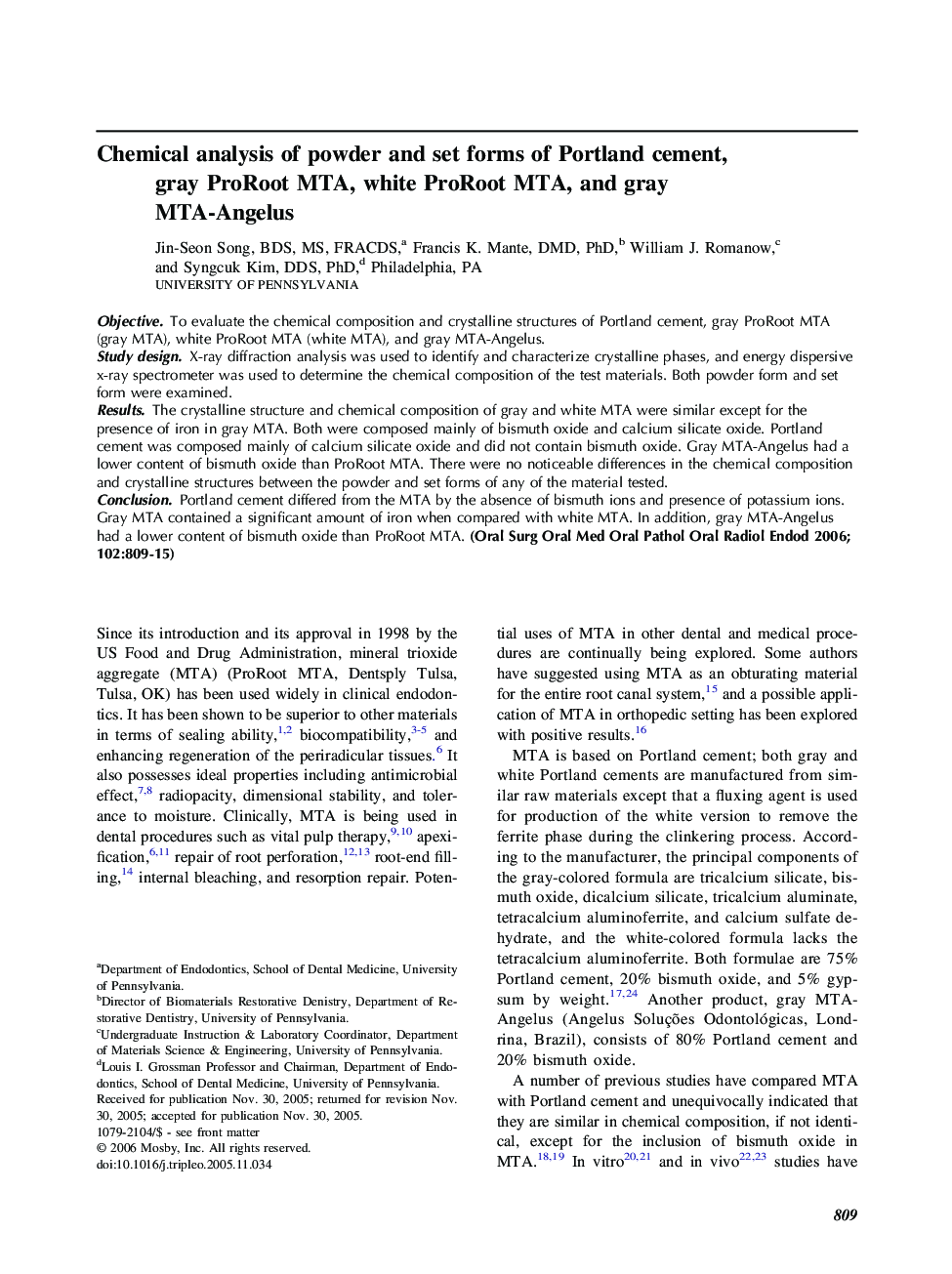| Article ID | Journal | Published Year | Pages | File Type |
|---|---|---|---|---|
| 3169722 | Oral Surgery, Oral Medicine, Oral Pathology, Oral Radiology, and Endodontology | 2006 | 7 Pages |
ObjectiveTo evaluate the chemical composition and crystalline structures of Portland cement, gray ProRoot MTA (gray MTA), white ProRoot MTA (white MTA), and gray MTA-Angelus.Study designX-ray diffraction analysis was used to identify and characterize crystalline phases, and energy dispersive x-ray spectrometer was used to determine the chemical composition of the test materials. Both powder form and set form were examined.ResultsThe crystalline structure and chemical composition of gray and white MTA were similar except for the presence of iron in gray MTA. Both were composed mainly of bismuth oxide and calcium silicate oxide. Portland cement was composed mainly of calcium silicate oxide and did not contain bismuth oxide. Gray MTA-Angelus had a lower content of bismuth oxide than ProRoot MTA. There were no noticeable differences in the chemical composition and crystalline structures between the powder and set forms of any of the material tested.ConclusionPortland cement differed from the MTA by the absence of bismuth ions and presence of potassium ions. Gray MTA contained a significant amount of iron when compared with white MTA. In addition, gray MTA-Angelus had a lower content of bismuth oxide than ProRoot MTA.
